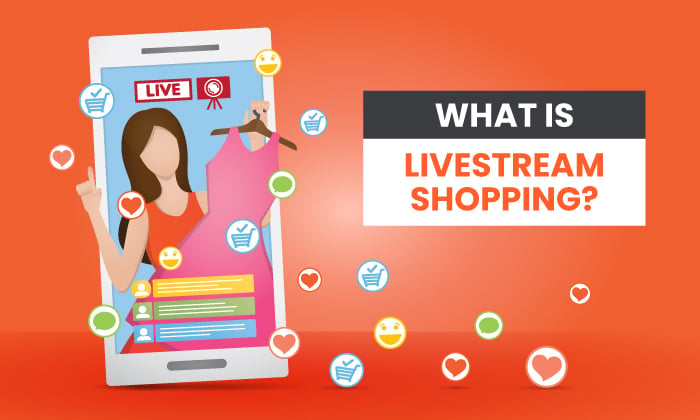
Traditional, physical retailers are great at customer service. They can focus on the specific needs of a handful of shoppers at a time, answering their questions and providing bespoke recommendations until browsers are ready to buy.
On the other hand, e-commerce stores have a much broader reach than their brick-and-mortar peers. There’s basically no limit to the number of people they can serve at once, and those people can be anywhere in the world as long as they have an internet connection.
Livestream shopping effectively combines the two, putting digital retailers in front of a vast online audience while still allowing them to respond to customers on a one-on-one level.
It’s highly effective: Livestream shopping generated $60 billion in global sales in 2019. Yet just $1 billion of that came from the United States, with China dominating the market. Almost one in three Chinese internet users has bought products via live broadcasts that link to a product landing page, according to the Cyberspace Administration of China.
However, the potential upside of livestream shopping means it could be only a matter of time before it starts catching on in the West.
What Is Livestream Shopping?
If you’ve ever watched a home shopping network like QVC, you’re probably familiar with the theory behind livestream shopping. A presenter showcases a product, which you can purchase during the broadcast.
That said, there are a couple of big ways livestream shopping improves upon the traditional home shopping experience.
For one thing, it’s far more interactive. While home shopping channels allow viewers to call in, livestream shopping enables the audience to interact through comments, likes, polls, and more. For example, anyone watching the stream can ask a question about the product or request that the host show it from a different angle.
For another, it’s more convenient. You don’t need to be in front of a TV screen to participate. You could be in a coffee shop or on the bus. Given that a staggering three-fifths of American viewers who watch live TV are aged 55 or over, if you’re trying to reach younger consumers, home shopping networks likely aren’t the answer!
In the United States, livestream shopping is currently used mostly by small, direct-to-consumer brands, including a handful of celebrities like Catherine Zeta-Jones. She sells her line of makeup products via the talkshoplive platform.
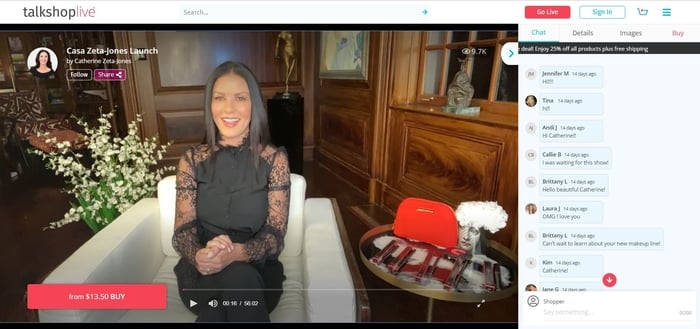
Livestream shopping isn’t limited to any specific product category (although it’s almost all B2C). A quick browse of categories on CommentSold, a livestream shopping platform used by more than 3,000 retailers, includes:
- women’s retail
- direct selling
- wholesale
- sports merchandise
- home decor
Livestream Shopping Platforms You Should Know About
Livestream shopping first rose to prominence in China, thanks in part to the existence of fully integrated digital platforms combining e-commerce, payments, and livestreaming. The undisputed market leader is Taobao, owned by Chinese e-commerce giant Alibaba, with three in five Chinese shoppers having tuned into at least one of the platform’s live shopping streams.
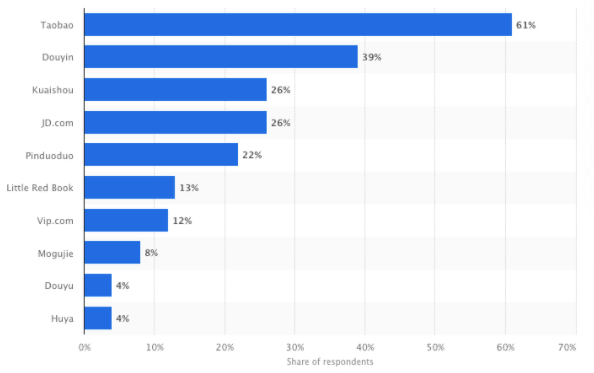
Outside China, a bunch of dedicated livestream shopping platforms aimed at Western audiences are already available. These include:
- Popshop Live: An iOS-specific platform that allows sellers to host shows from their iPhones, use photos to upload purchase links, and integrate with inventory management software.
- buywith: Allows influencers to “shop live with their followers” on brands’ e-commerce sites, helping influencers to win bigger partnerships and brands to generate greater ROI from their influencer marketing strategies.
- Bambuser: Originally a live streaming platform for journalists, it’s since entered the livestream shopping space and has been used by brands like H&M.
- Livescale: A live shopping app that integrates with a range of existing e-commerce platforms, including Shopify.
- NTWRK: Promotes daily limited-release product drops and shopping events. The platform reportedly generated over $100,000 in revenue in just 24 hours by selling a $250 platinum money counter from celebrity jeweler Ben Baller.
Unsurprisingly, the big tech companies are starting to bet big on livestream shopping, too. Amazon has a streaming platform featuring daily shows on topics like cooking, fitness, and makeup.
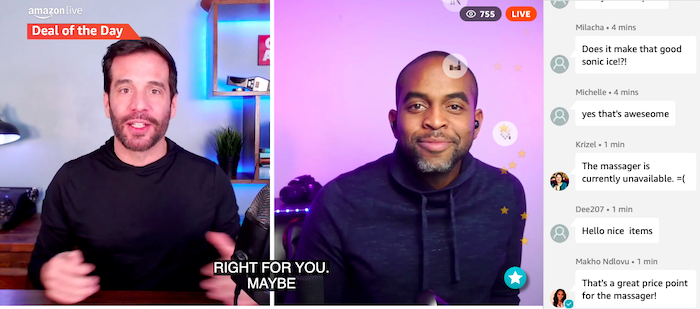
Facebook has gotten in on the act as well, rolling out a live selling feature across its platforms, including Instagram.
How Does Livestream Shopping Work?
The premise behind livestream shopping is pretty simple. It effectively combines livestreaming, which you can already find on a lot of the big social media platforms, with a direct purchasing feature.
It’s like watching a live unboxing on YouTube, except you can buy the product right then and there.
Livestream shopping also encompasses a lot of the features that make social media so popular. Comments pop up as they appear, just like in a Facebook or Instagram livestream, and the audience can react in real time with likes and emojis. All that interaction makes for a far more engaging shopping experience than simply adding an item to a shopping cart and filling out shipping details.
Of course, livestream shopping only works if you can attract a large enough audience. With that in mind, a lot of brands favor one of the following tactics to generate hype:
- Limited-edition releases: In some livestreams, the product is only available for a set time. A countdown timer is often displayed within the stream to increase the sense of urgency and drive sales.
- Time-specific discounts: Shoppers can access special promotions by purchasing during a set window.
Both of those approaches lend a feeling of excitement and exclusivity to the occasion, creating an experience that’s nothing like traditional e-commerce.
Tips for Hosting a Livestream Shopping Session
Like the sound of livestream shopping? So do a lot of other brands. Take a look at the NASCAR slide of one livestream platform, Brandlive, and you’ll see name-drops like Adidas, GoPro, Nike, and even the U.S. president!
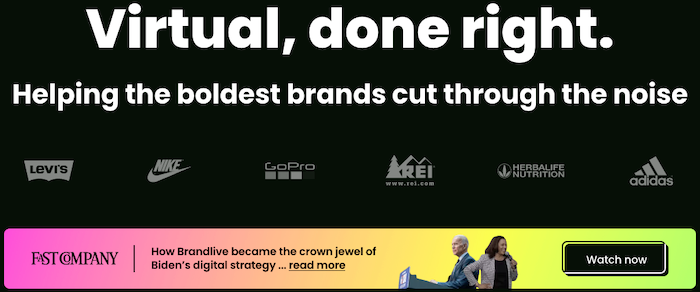
Of course, just because it’s a hot new trend doesn’t mean there are any guarantees of success. Read these tips before you host your first livestream shopping experience.
Understand Your Target Audience
As with anything else in retail, livestream shopping won’t yield results if you don’t truly understand your audience. Unless you know who you’re reaching, you can’t make smart calls on issues like:
- which platform to use
- which products to promote on your livestream
- what tone of voice to adopt
- how to raise awareness of your livestream
- when to host it
There are many ways to research your audience, but one you shouldn’t overlook is Google Analytics.
You can find a ton of user data within this tool if you know where to find it. As a starting point, click the “Audience” tab in the left-hand menu and then select “Overview.” As you’d expect, this gives you a brief breakdown of key audience information, such as:
- where they live
- what sort of device they use to visit your site
- what browser or operating system they use
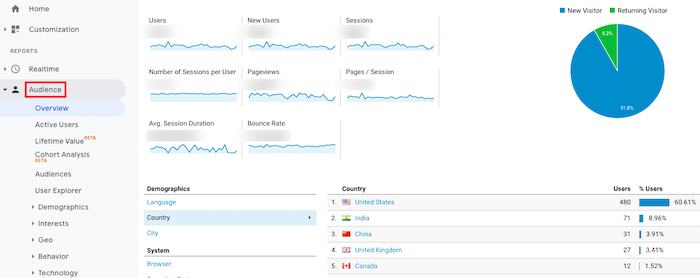
Next, take a look at the “Interests” section. This is where you’ll find some of the most interesting (and useful) information around your audience’s behaviors, characteristics, and professional lives. Depending on your audience’s makeup, it might tell you things like:
- recent life events, such as a house move or new job
- hobbies and interests
- the industry they work in
- the types of content they engage with
Some of this will seem obvious. If you sell wedding dresses, it won’t surprise you to learn that a lot of your customers are getting married soon.
However, you might unturn a few gems. For instance, say you’re a homeware brand, and you learn that a lot of your audience have recently started their own businesses. Maybe it’d make sense to host a live shopping stream dedicated to kitting out a home office?
Build a Dedicated Following
Once you understand who your audience is, you can get on with building a following. The ability to foster a sense of community among shoppers is one of the standout features of livestream shopping, helping bring people back to your streams time and again.
When it comes to attracting a following, we can learn a lot from Chinese livestream influencers (also known as “key opinion leaders”) like Huang Wei, who sold $6 billion worth of products in a single year.
Better known as Viya, much of her success comes from the efforts she’s taken to prove herself trustworthy. Viya refuses to feature products unless they’ve first been approved by her team and then by herself. In fact, she spends about four hours a day on product testing.
This commitment to quality has seen her mostly female followership take up the nickname “Women of Viya.” They don’t just buy from her; they feel loyal to her and like they’re part of a club.
Market Your Livestream Shopping Sessions
Clearly, if you don’t have an audience, you don’t have a live shopping stream. It takes a lot of time and effort to build up a community, so you’ll likely need to do your share of promotion ahead of your first stream.
Influencer partnerships are a natural fit for livestream shopping. Getting a recognizable face to showcase your products and highlight key features and benefits can be great for driving sales, and it also helps create some noise ahead of the event.
Again, we can learn a lot from Viya here. When the Chinese streamer invited Kim Kardashian onto her show to promote the latter’s fragrance line, they sold 150,000 bottles in a matter of seconds.
Viya is extremely selective about the influencers and celebrities she works with. Typically, she only invites those with hosting experience because they come across more naturally on-stream.
Of course, influencer marketing is only one approach to promoting a livestream. It might not be appropriate to your brand, or you might not have the budget to partner with the right person. Don’t worry; there are lots of other tactics you can use, like:
- Running social ads: Livestream shopping is a highly social experience, so why not leverage the advertising capabilities of platforms like Facebook and Instagram to generate awareness of your event?
- Informing your customers: Let your existing customers know about your first foray into livestream shopping by shouting about it in your newsletter, organic social posts, or blog.
- Building excitement: Remember when I said how streamers use limited-edition product launches and time-specific discounts to generate hype? Do the same with your livestream, and make sure everyone knows about it before the event.
Choose the Right Platform for Livestream Shopping
The final piece of the puzzle is choosing the best platform to host your shopping session.
When cosmetics giant Maybelline promoted the launch of a new lipstick to Gen X women in China, it selected Taobao as its platform of choice.
Why? Because it wanted to steer clear of niche apps, shorten the path to purchasing to a single click, and reach as many people within its target niche as possible. During the event, anyone searching for Maybelline on Taobao was shown the livestream in a pop-up window, and 50 key influencers were also invited to stream to their fans, allowing them to add their own unique touch to the launch.
To give an example from a company that isn’t a household name, California-based Japanese pop culture brand JapanLA has seen big success through livestream shopping on Popshop Live. In just one show, it sold $17,000 worth of products through more than 1,500 individual checkouts.
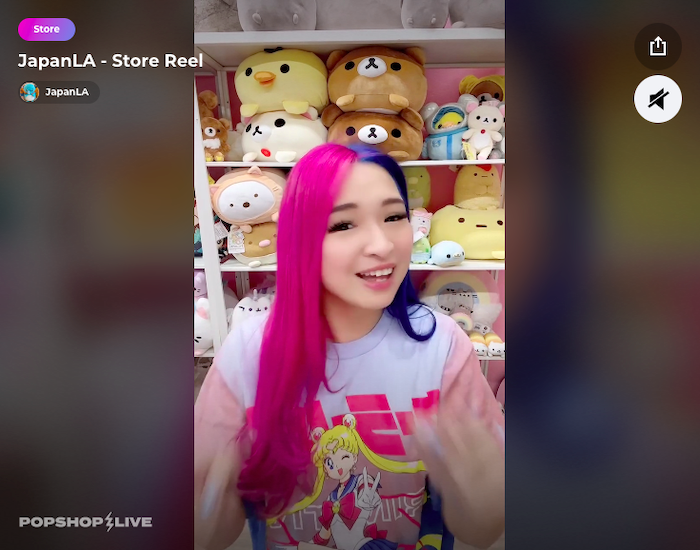
JapanLA owner Jamie Rivadeneira says Popshop Live’s interactive features are key to the brand’s success. “I’m able to respond to customers’ requests in real time, such as adding any products that the audience sees in the show on the fly.”
Conclusion
Livestream shopping might be a hot e-commerce trend, but at its heart, it’s very simple. Doing it well is all about leveraging traditional marketing skills like researching your audience, building a community, and choosing the right amplification tactics.
Get those things right, and you’ve got a chance to capitalize on a new approach to digital commerce that prioritizes audience engagement and fosters trust in a way that traditional online retail simply can’t match.
How are you planning to incorporate livestream shopping in your e-commerce strategy?
The post What is Livestream Shopping? appeared first on Neil Patel.
from Blog – Neil Patel https://ift.tt/3qcQObI

No comments:
Post a Comment